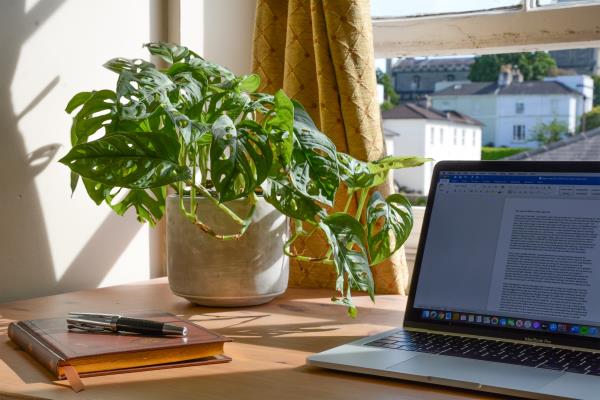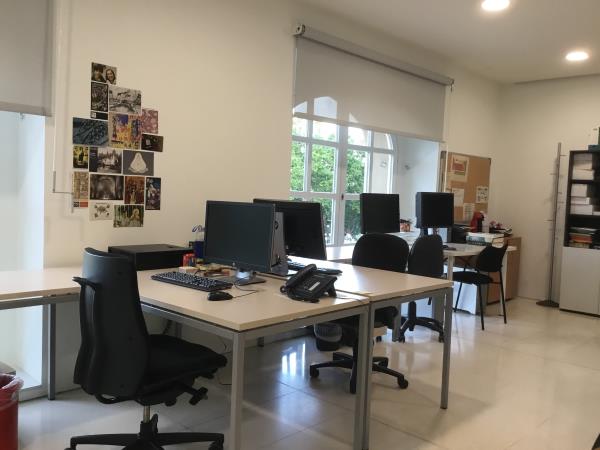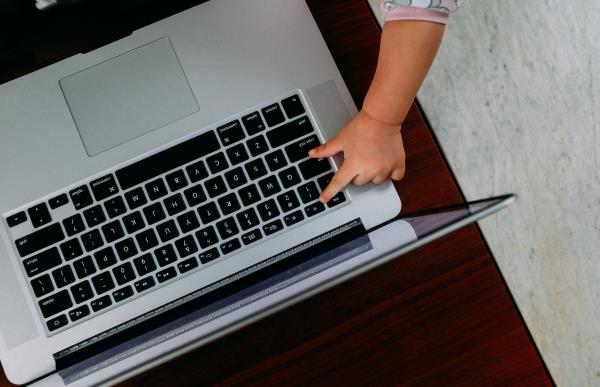Cristina Riera
Four months ago, no one imagined that our lives would change as much as they have because of the pandemic caused by the coronavirus. There has been a lot of talk about teleworking for a long time, and while it is true that private companies have made great strides in this area, the public administration hasn’t done so. But in the middle of March, everything changed overnight and we have had to adapt quickly to a new reality. Teleworking, or remote work, has appeared in our lives as the only tool to be able to continue our work during lockdown, and all the signs suggest that it has come to stay for good.

Confinement and working from home
When the museum had to close temporarily we were confined to our homes, many of the workers started working voluntarily with our own computers that we have at home. Little by little, the museum has provided us with laptops that have made our work much easier. We have been able to access our internal directories where we store all the files and the work has been much easier and more agile to carry out.

We should always try to get the most out of everything, even in a period as difficult and sad as the one we are living in. In just a couple of months we have advanced in the field of remote work against the clock, the equivalent of perhaps a year or two under normal circumstances.
Advantages and inconveniences of remote work
Teleworking brings many advantages and few disadvantages. To start with, it saves workers’ time commuting from home to work and vice versa. If you live in Barcelona city, we’re talking about between an hour and an hour and a half a day going and coming back, but there are many colleagues who live outside Barcelona and come of us spend between two and three hours a day commuting. Furthermore, saving us these trips also means that we can sleep and rest more. The alarm clock rings later. And we cannot forget how good this is for the environment. The reduction in travel by private vehicles leads to a significant reduction in the greenhouse gas emissions and, consequently, a better quality of the air that we breathe. You only need to check the data made public during the strictest weeks of lockdown, in which you can see a significant reduction in air pollution.

Another advantage that I consider to be one of the most important is family reconciliation. I used to take my lunch box with me to work, I was always loaded with food here and there, and I had a quick lunch so as to leave quickly and get home early. Now I can have lunch every day with my kids and spend more time with them. Moreover, in the afternoon, I can spend more time with them. When I stop work, I am already at home, and this hour I would spend getting home from work and putting on comfortable clothes, I now dedicate it to helping them with their schoolwork.
Furthermore, even though in the museum we have offices equipped with everything we need, it is not the same as working from home with all the comforts at your fingertips. You can work in a more relaxed way. Now that the weather is so good, I can sit on the balcony and work on the laptop while I hear birds and take in the air and sun. I also enjoy working on the sofa at home with relaxed background music.

But the benefits are not just for workers. They are also for the company. There are about 130 people on the staff at the museum. This means that when we are doing remote work, the museum saves on water, electricity and gas. In addition, there is less use and, therefore, less wear and tear on the facilities. On the other hand, an employee who works more comfortably and more relaxed from home is much more receptive and is much more productive. So it’s a win-win situation!
As for the drawbacks, as I’ve already mentioned, I don’t think there are many. Personally, one of the biggest ones is social distancing with my colleagues. With some of them, we’ve been working together day after day for some 25 years. Even though with the ones I have a closer friendship with we often do video calls to see each other, it’s still not the same thing. Before, we would have breakfast and lunch together and often made the trip from the museum to home with them. I also miss my office with the plants and personal things we all have there to make us feel a little at home.
It should also be said that there are jobs that allow more teleworking and others that require more face-to-face work. But well, maybe as in everything in life, it is best to find the midpoint, a balance, and now that we are gradually regaining some normalcy, a good solution is the one that the museum has begun to implement depending on the needs of each department and the people who work there: a combination of onsite working days with others doing teleworking.
Departament de Comunicació







